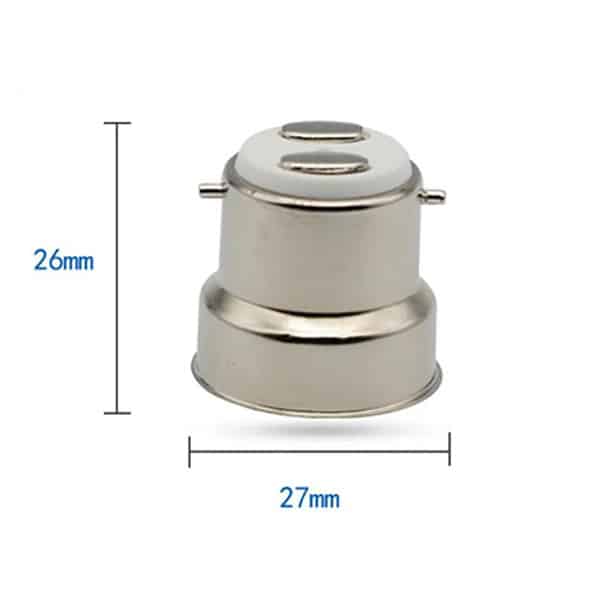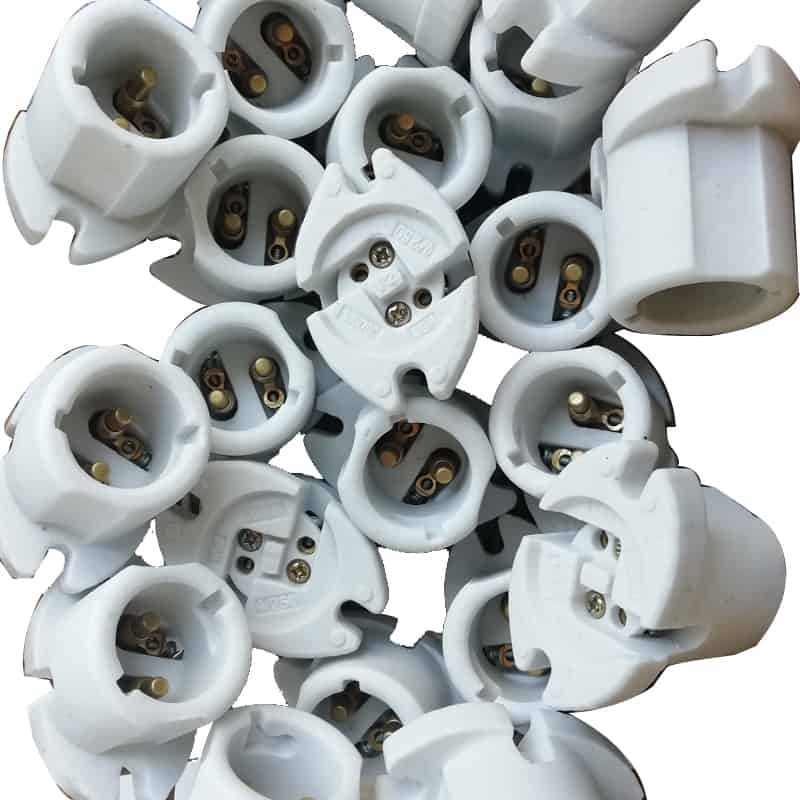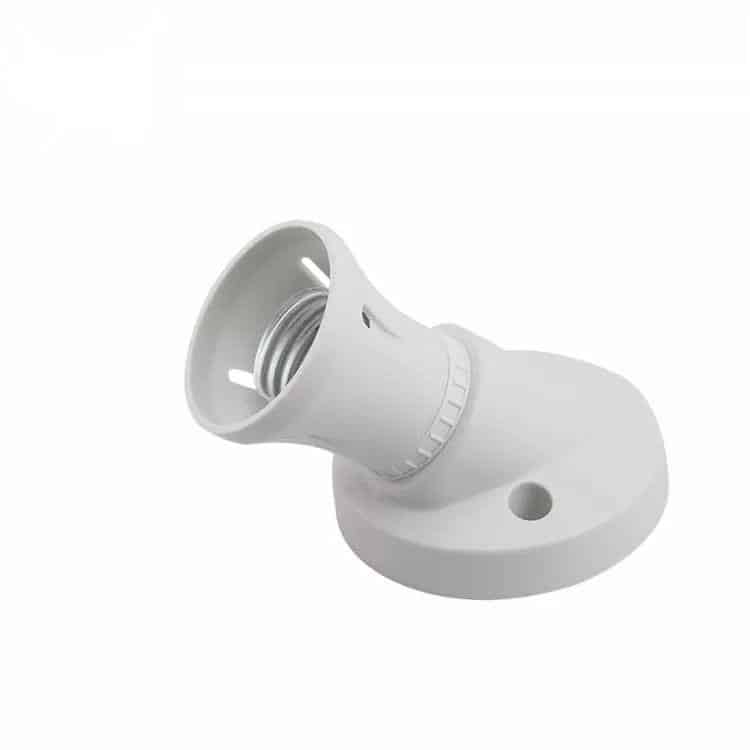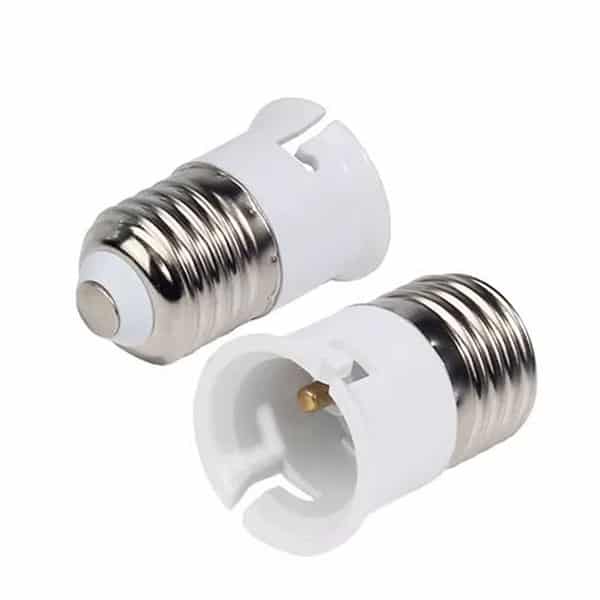Most people have a hard time telling the difference between B22 and E27 power sockets and end up with a situation where the bulb doesn’t fit in the socket. You need to understand the difference between the two to ensure you make the right choice for your lighting needs.
The difference between B22 and E27 power sockets is the way the light bulb fits into the socket and the diameter of the cap. B22 has a bayonet cap with a 22mm diameter. E27 has an Edison screw cap with a 27mm diameter. Both are widely used in homes and businesses.
Keep reading to learn the unique features and uses of these two types of sockets.

What is a B22 Socket?
The B22 socket, also known as a bayonet socket, features a 22mm diameter. It is most common in countries like the UK, India, and Australia. The fitting mechanism involves two small pins on either side of the bulb’s base, which slot into the fixture and twist to lock the bulb in place securely. This design is popular in residential lighting, especially in older homes or buildings that haven’t updated their fixtures in recent years.
B22 sockets are highly favored for their ease of use, especially in environments requiring quick changes, such as high-vibration settings. The bayonet fitting system provides a secure, non-slip connection, which reduces the risk of loosening over time, making it a safer option in some cases compared to screw-type sockets like E27.

What is an E27 Socket?
The E27 light socket, commonly referred to as the Edison screw socket, is the most widely used fitting globally, especially in Europe and Asia. The “E” stands for Edison, paying tribute to Thomas Edison’s invention, while “27” indicates the 27mm diameter of the socket. Its design features a threaded screw-in mechanism, which offers a secure and stable connection once fully twisted into place.
E27 sockets are popular for their versatility and widespread use in both residential and commercial applications. This socket is compatible with a wide range of bulbs, including incandescent, LED, and CFL, making it a go-to choice for various lighting needs. The screw-in mechanism, while secure, can be viewed as more time-consuming when changing bulbs compared to the quicker bayonet lock system of the B22.
Key Differences Between B22 and E27 Sockets
- Fitting Mechanism: The most prominent difference is how the bulbs are installed. B22 uses a bayonet mechanism where you push the bulb in and twist to lock it, while E27 bulbs are screwed into the socket.
- Size: The B22 socket has a 22mm diameter, while the E27 socket is slightly larger at 27mm. This difference in size can influence bulb choices based on socket availability.
- Voltage Compatibility: E27 sockets are more versatile in terms of voltage, being designed for both 110V and 240V systems, making them more adaptable globally. In contrast, B22 sockets are typically used in regions with 220V to 240V systems.
- Bulb Availability: Both B22 and E27 sockets support various bulb types, but E27 is more commonly available in many countries, providing a broader selection of compatible bulbs.

Is it Safe to Use E26 Bulbs in E27 Sockets?
Yes, E26 and E27 sockets are interchangeable in most cases, as they share similar physical dimensions and the difference lies only in the screw thread diameter. E26 is standard in North America, while E27 is more common internationally. As long as the voltage and wattage match, it is safe to use an E26 bulb in an E27 socket.
Can You Change From a B22 to an E27 Fitting?
Yes, it is possible to convert a B22 socket to an E27 socket using an adapter. These adapters are easy to install and make switching between the two types of bulbs simple. However, it is crucial to check voltage compatibility and ensure the maximum wattage rating of the fixture is not exceeded when using an adapter.

Which is More Common in Australia: B22 or E27?
In Australia, the B22 socket is more traditionally used in homes, particularly in older light fixtures. However, E27 sockets are becoming increasingly common, especially in newly built homes and imported lighting products. As the global standard shifts toward E27, many Australian homes are transitioning to this fitting for its broader bulb options.
Compatibility and Adaptability of B22 and E27
Both B22 and E27 sockets are compatible with a wide variety of bulbs, including incandescent, halogen, CFL, and LED types. This flexibility makes both sockets suitable for residential, commercial, and industrial lighting needs. Additionally, B22 to E27 adapters are available, allowing users to easily switch between these two socket types without replacing their entire light fixture.

How to Identify a B22 or E27 Socket?
Identifying whether a socket is B22 or E27 is straightforward. A B22 lamp socket will have two small pins on either side of the bulb base, which must be aligned and twisted to lock into the socket. In contrast, an E27 lamp socket uses a threaded screw base, requiring the user to twist the bulb into the socket. If in doubt, you can also check the label on the socket or the bulb packaging, which typically indicates the fitting type.
Conclusion
Choosing between B22 and E27 depends on your specific lighting needs and regional compatibility requirements.













